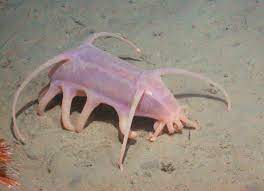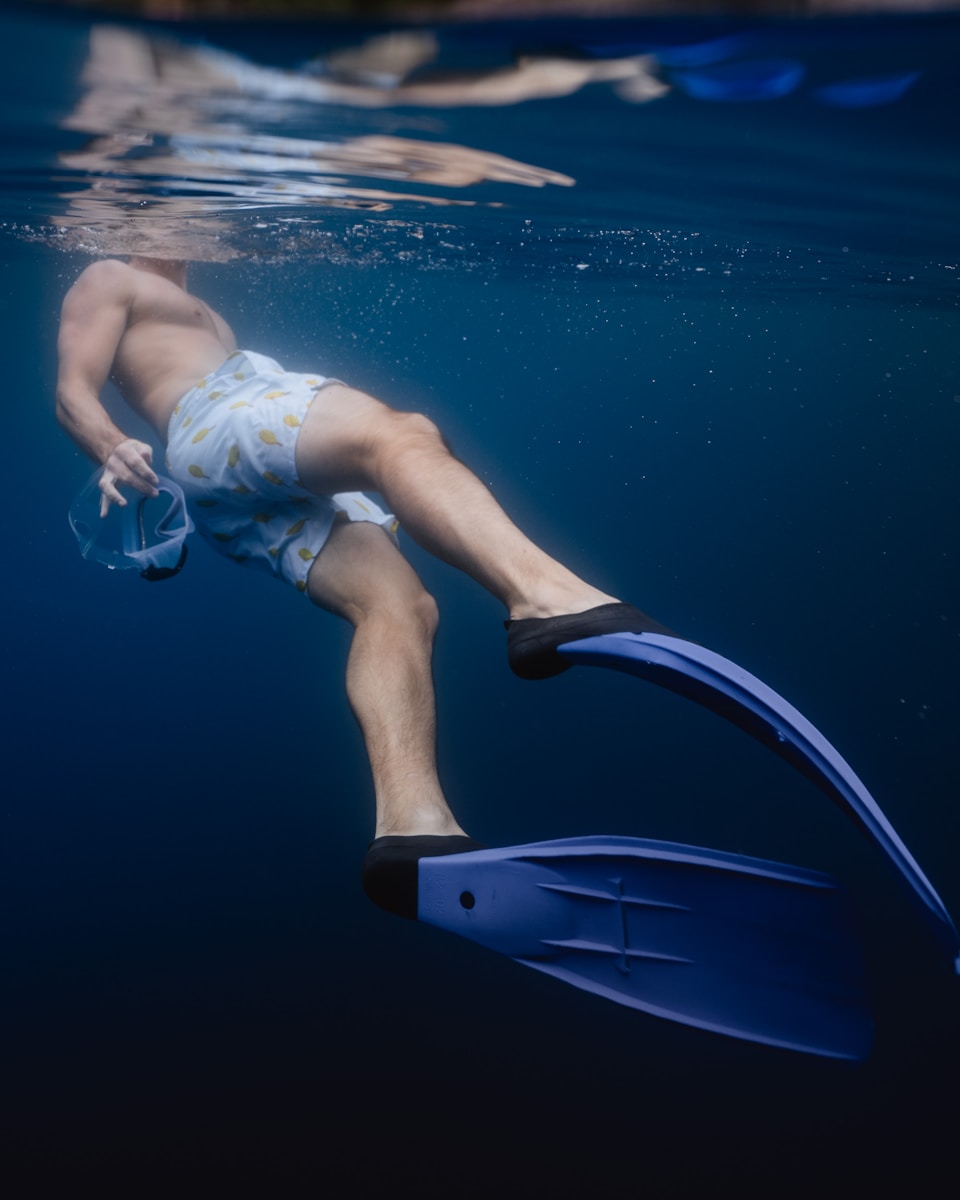Sea pigs, also known as “Scotoplanes” are a deep sea genus of sea cucumber which thrive under the deep ocean. Their diet consists of mucus, fish feces, and dead plants. When something big, like a whale or shark falls into the depth, thousands swarm to the corpse to feed on its nutrient rich meat and bacteria. To find aforementioned whale corpses, sea pigs rely on both olfactory sense and touch to locate meals.
Sea pigs are only between 1.5 and 6 inches long. They get their name from their pink skin and their habitat, the muddy sea floor. Sea pigs have six pairs of tube shaped “feet”. To move, the creatures use water cavities within the skin in order to deflate and inflate the foot, causing it to move. Despite the sea pig mostly crawling along the seafloor they are able to swim for short distances when startled. Sea pigs also have small handlike extensions called papillae which they use to dig around for food in the mud. They also have ten brucal tentacles around the mouth. Sea pigs have a poorly developed respiratory system and lack respiratory tree, leading them to breathe through their anus.
Sea pigs live in the abyssal zone, a part of the deep sea in which it is very hard to thrive. You can find sea pigs under the Atlantic Ocean, Pacific Ocean, and Indian Ocean. They often live at depths of over 3,900 to 16,400 feet (1200 to 5,000 meters). Many similar species can be found under the Antarctic ice. Sea pigs are often come in massive groups of around 300 to 600 individual sea pigs. Sea pigs are often targets of many parasitic hosts such as gastropods and tanaid crustaceans. Sea pigs are often babysitters to juvenile king crabs. When a young king crab finds a sea pig, it will often grab onto the belly of the sea pig and stay there for protection and elevated food opportunities. It is not known what the benefit is for the sea pig.


Related Articles
https://www.montereybayaquarium.org/animals/animals-a-to-z/sea-pig
https://www.treehugger.com/sea-pigs-facts-4864441
https://critter.science/the-odd-and-squshy-sea-pig/
Take Action






